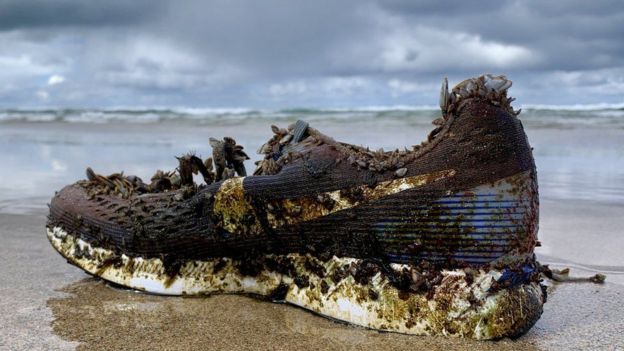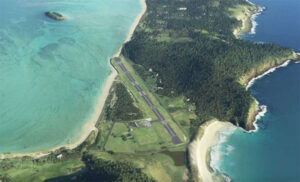
Over the past year, hundreds of pairs of shoeless boats have floated on the beach, starting from Bermuda and the Bahamas to Ireland and Orkney.
Two questions arise. How did these shoes float to the beach like this? Go first. Second, why are scientists so interested in their locations? Is this the case?
The curiosity begins in September 2018 with the arrival of Gui Ribeiro, a mysterious species that floats off the shores of Flores Island, a small island in the Atlantic Ocean.
At first those strangers were a small number. In the first stage, they could be ignored or treated as human waste by human activities.
But the situation quickly changed with the arrival of a large number of stranger objects.
Trainers, light rubber slippers, and other types of shoes floated on shore as usual, and these floating objects distinguished them among other things.
These shoes are made under the same trademark and are of the same design.
Some trainees lodging on the shoe had labels mounted on the shoe only one day of production.
Another surprise is that the shoe appears to be unused.
Within a few months, the number of Nike Trainers shoes collected by Gui Ribeiro, along with other products, was about sixty.
With that, the incident came to life and began to spread rapidly as news.
Seven months passed. Tracey Williams, who lives on the shores of Cornwall, in the United Kingdom, 2,250 kilometers from Flores Island, saw a similar trend here.
“A friend of mine in Ireland asked me if I saw anything on the beach. So the next day I went to the beach and saw a few.”
Says Tracey Williams.
“There’s a network of people walking along the beach to pick up beach cleaners or things that are worth it, so when a specific item comes along, we find it quickly and then we keep our eyes on it.”
The ‘Azores’ Atlantic archipelago and southeastern England, as well as the float, have been seen in Bermuda, the Bahamas, France, Ireland, Orkney and the Channel Islands.
Guy Ribeiro explains, “Starting with the tests I’ve done.”
“Seventy-seven to six hundred containers of the Maersk Shanghai shipwreck show some of the slippage.”
Maersk Shanghai, a 1,063 ft (324 m) long container shipping vessel, sailed from Norfolk, Virginia, US, last spring to Charleston, South Carolina.
On the evening of March 3, she was struck by a storm while sailing seventeen miles off the narrow Oregon Inlet of North Carolina.
A ship’s container filled with ship’s ship tossed into the ocean as it struggled against the rising tide of the rough sea.
A group of sailors sent out to search for the missing containers found nine containers floating in the sea, but seven days later it was reported by the ocean commercial media that it had sunk.
It is not possible to say with certainty that all the shoes found off the coast were of the ship ‘Maersk Shanghai’.
It is believed that all the footwear belongs to the same ship. When contacted, the BBC inquired from Zodiac, which operated the ship, about the ship’s response.
Also, when the BBC contacted Nike, their choice was to remain silent.
However, the two commercial companies, the Triangle and the Great Wolf Lodge, confirmed that some of the shoes were found after the ship sank.
Guy Ribeiro is not the only beach cleaner who is convinced that the shoes are from the ship Maersk Shanghai.
Liam McNamara is a resident of the west coast of Ireland. He has found more than 100 shoes from the beach. Most of them are Nike trainers shoes. He thinks that there is a lot of room for them to fall off the ship.
“One company has admitted that it has lost some of its merchandise. Another company has admitted that it lost some of its cargo at sea,” says Liam McNamara.
What is the impact of this?
“Either sink to the seabed or float to the shore. This can have a devastating effect on marine life.” Said Marine Safety Association’s Lorraine Eiles.
“These shoes become micro-plastics over a period of time. It has a huge impact on valuable marine life.”






